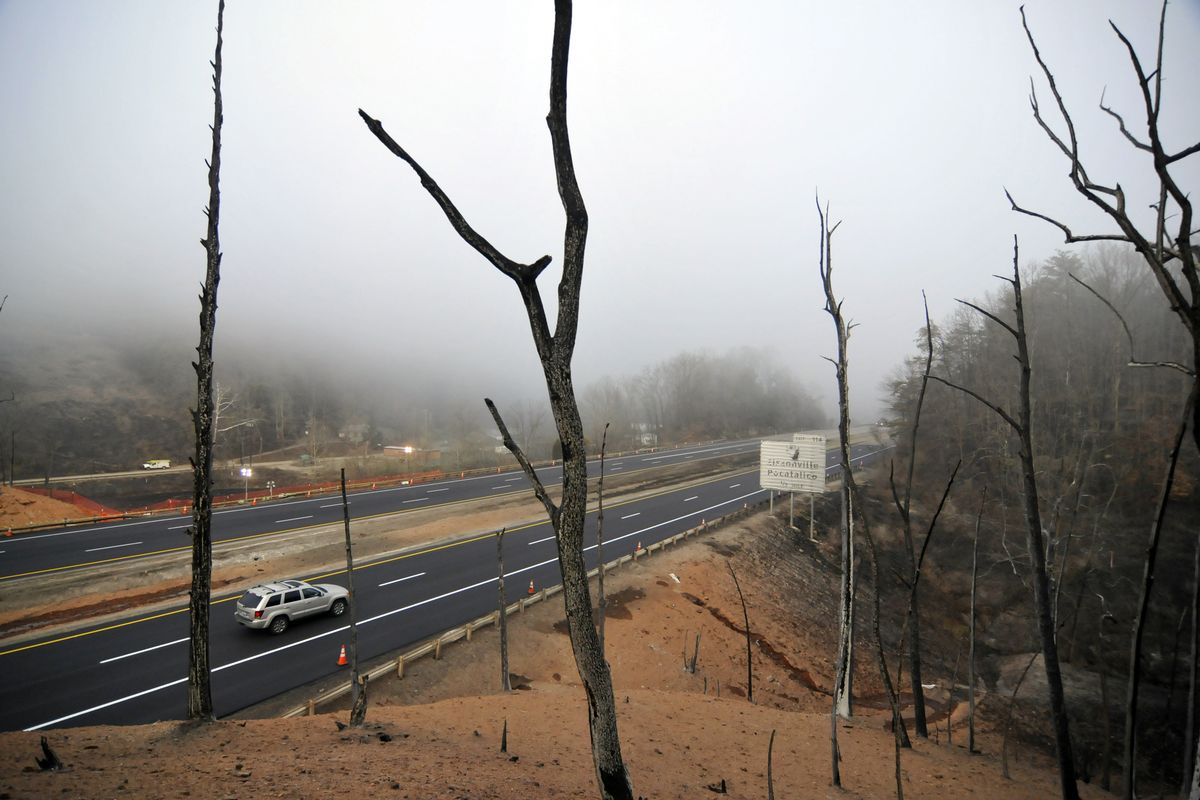W.Va. gas line blast a reminder of widespread risk

SISSONVILLE, W.Va. (AP) — Nearly 15,000 miles of natural gas pipeline stretch across West Virginia, and as residents of this community north of Charleston now know, devastating explosions can happen without warning.
Federal regulators say there have been 20 “significant” pipeline incidents involving deaths, injuries or major property damage in West Virginia in the last decade. The latest came Tuesday when a 20-inch Columbia Gas transmission line exploded, destroying four homes and cooking a section of Interstate 77, a major north-south commuting corridor that passes through the capital city.
By Wednesday, hard-working road crews had the highway repaved. The northbound lanes reopened early in the morning, and traffic began flowing on the southbound lanes a few hours later.
Meanwhile, investigations into what caused the massive blast in a 20-inch Columbia Gas Transmission line are under way. Teams with the parent company, Indiana-based NiSource, are working alongside investigators, and the company says it is cooperating fully.
After the investigation is finished, NiSource said, it will “take any follow-up actions necessary to ensure the continued safe operation of our system.”
The pipeline is part of a network that primarily serves local utilities but also delivers gas to Georgia. NiSource says the explosion affected one specific location “and does not affect the safety or operation of any pipelines outside of that immediate area.”
The damage from the blast and the inferno it sparked were breathtaking. Four homes burned and collapsed. Five others were damaged. On the highway, the heat burned utility poles and melted guardrails and pavement.
With many people at work or school at the time, no one died. But at least one motorist was still shaky long after the fire was out.
Sancha Adkins, a respiratory therapist from St. Albans, was heading north on I-77 toward a patient’s home in Ripley when a flash alongside the highway caught her eye. She slammed on the brakes and pulled to the shoulder, as did the tractor-trailer behind her, just in time to see a wall of flame roar across the road about 150 feet ahead of her.
She tried to back up, but the truck behind her wasn’t doing the same fast enough.
“I did a U-turn in the middle of the road and literally drove the wrong way on the interstate. I had my hazard lights on flashing, just trying to tell people to get out of the way,” she said.
There was oncoming traffic as she hugged the berm on the median.
“I didn’t care,” she said. “It wasn’t as bad as that explosion.”
Experts consider pipelines a safer way to move gas than rail, truck or barge, but gaps remain in regulatory oversight.
In January, President Barack Obama signed a law aimed at improving such oversight. The measure increased penalties for violations, required automatic shut-off valves on new pipelines and improved public access to safety information.
An advisory committee from the U.S. Department of Transportation’s Pipeline and Hazardous Materials Safety Administration (PHMSA) is meeting this week near Washington, D.C., to discuss the law’s implementation.
The law was partly based on a bill co-sponsored by U.S. Sen. Jay Rockefeller, the West Virginia Democrat who chairs the Senate Commerce Committee.
“Paramount to the success of America’s pipeline system,” he said a year ago this month, “is an unwavering commitment to safety.”
According to PHMSA, there are more than 2.6 million miles of pipeline crisscrossing the United States, of which 304,725 are natural gas transmission lines.
The network includes “gathering” lines that transport natural gas from well sites to compressor stations and other processing facilities, the 20- to 42-inch transmission lines that carry gas long distances, and distribution lines as small as 2 inches that carry gas into homes and businesses.
“No question about it, it’s by far the safest mode of transportation compared to anything and pretty much any way you want to measure it,” said Paul Oleksa, who runs a pipeline safety consulting company in Akron, Ohio.
In March, The Charleston Gazette (http://bit.ly/W58PFx ) reported, the U.S. Government Accountability Office warned that many gathering lines escape federal scrutiny and noted a “long-term pattern of understaffing” for pipeline safety at the U.S. Department of Transportation.
Remote locations contribute to the lack of scrutiny, the report said. In some cases, only about 10 percent of the lines are actually regulated.
From 2007 through 2011, pipeline accidents nationwide killed 21 workers and 47 other people, resulting in nearly $2.6 billion in property damage, according to PHMSA.
“I would say they’re very rare,” Oleksa said. “On the other hand, they are spectacular and the public has a fear of natural gas. So when something happens, it becomes big news and everybody is aware of it.”
In 2010 and 2011, a total of 13 people died when gas lines exploded in San Bruno, Calif., and Allentown, Pa.
Last month, more than 40 buildings, including a strip club and a day care center, were damaged in a natural gas explosion in western Massachusetts that injured 18 people, while two people were killed and several homes were destroyed in an explosion in Indianapolis that is being investigated as a homicide.
Pipeline operators are required to submit incident reports within 30 days of an occurrence.
“While many stakeholders agree that federal pipeline safety programs have been on the right track,” the Congressional Research Service said earlier this year, “the spate of recent pipeline incidents suggests there continues to be significant room for improvement.”
___
Smith reported from Morgantown, W.Va.